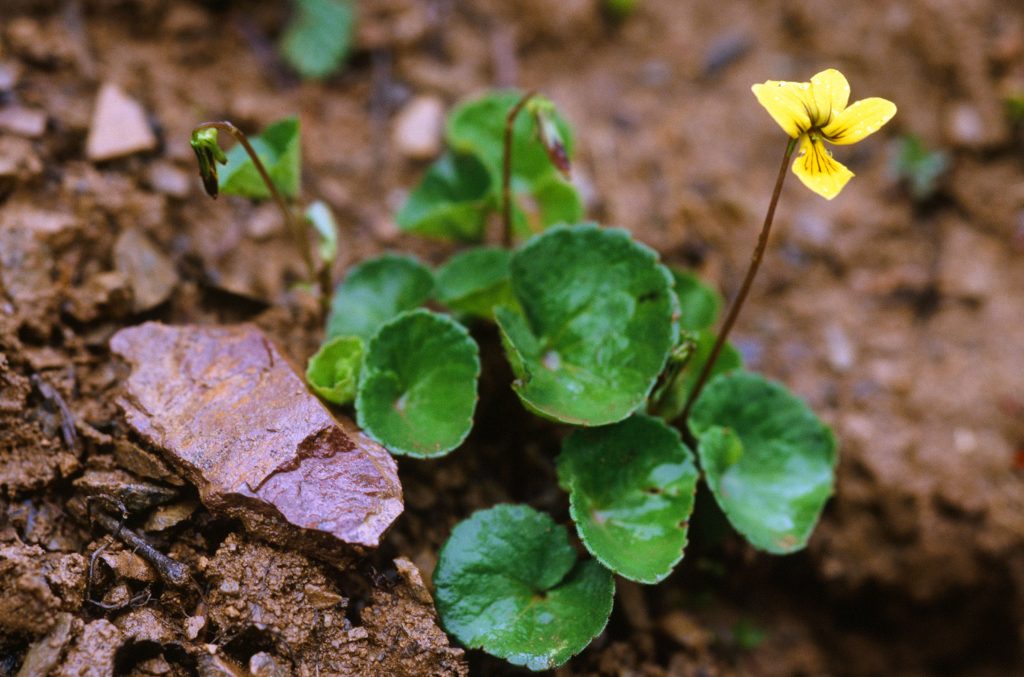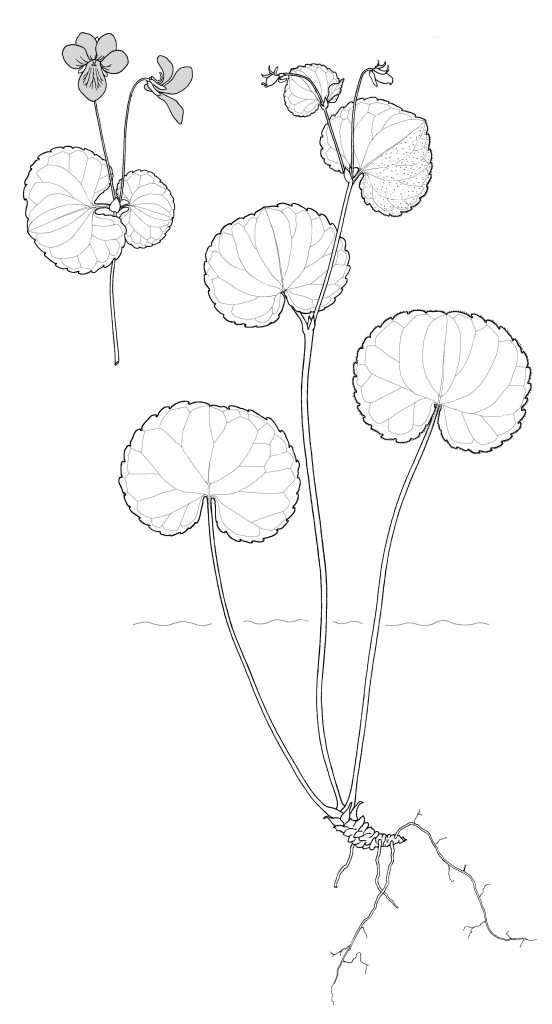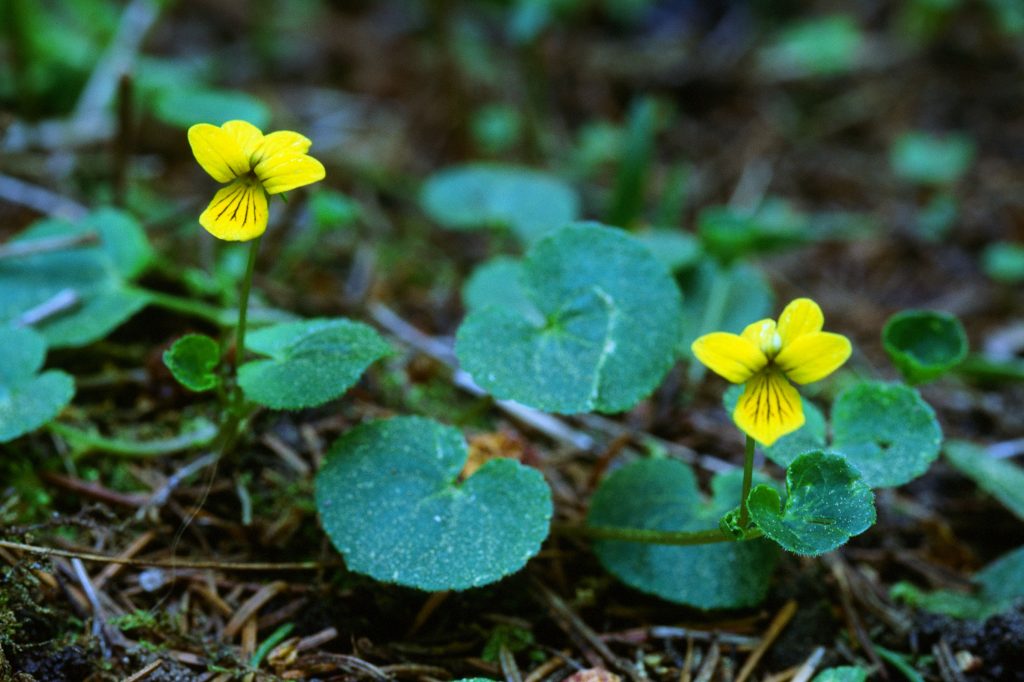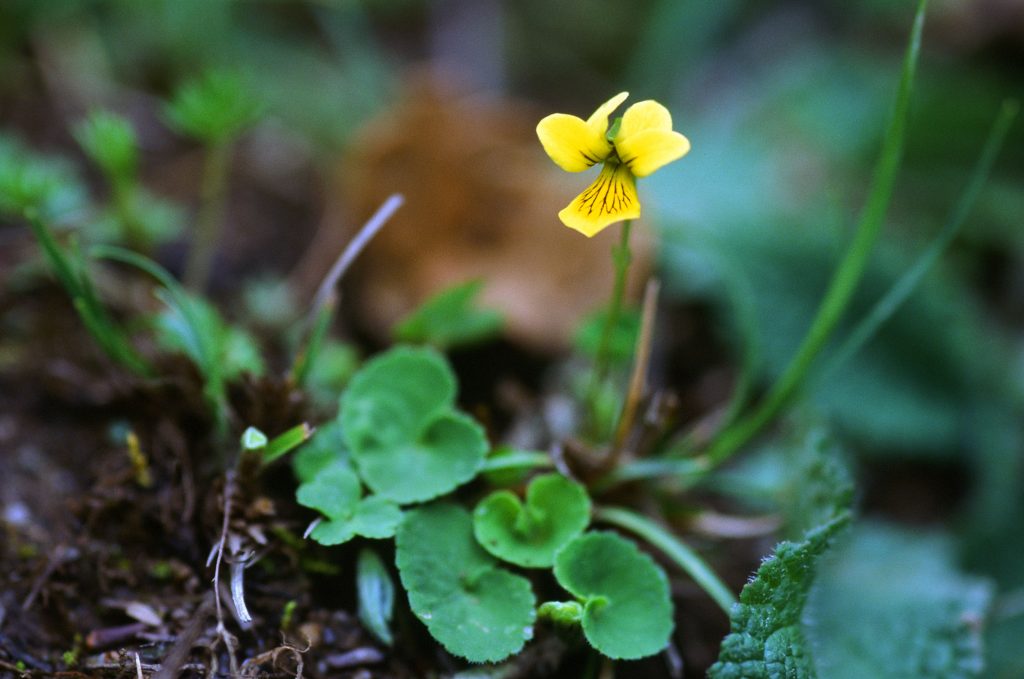
Viola biflora
Description. Illustrations: 3 photographs of Viola biflora and 2 drawings.
Viola biflora is a member of section Chamaemelanium, subsection Biflorae, a group of several geographically separated races distributed on high mountain ranges around the North Pole. Viola biflora migrated from Eurasia across the Bering land bridge to western North America where it is now found in Alaska, the Yukon Territory, British Columbia and Colorado. It is the only species of this subsection in North America.
The key characteristics that identify V. biflora are:
- northwestern distribution
- yellow flowers in the upper axils of the stem
- kidney-shaped leaves
- hairs on the leaf margins
- head of the style divided into two parts, stigmatic opening in between.
- Persistent recurved sepals on seed pods

The only other yellow-flowered species growing in the same regions is Viola glabella distinguished by its larger wide heart-shaped leaves, hairs on the lateral petals and on the undivided style head. These two species have been known to hybridize.

Plants are noticeably stemmed and without stolons; plant height approximately 9 cm above ground. The crown of plant is up to 10 cm underground, a protection against freezing temperatures. One to several thin stems grows from a cream-colored short, fleshy rhizome around which small persistent leaf bases are densely clustered; long fibrous roots are present. The leaves are broadly reniform to orbicular, narrowly cordate at the base, thin in texture and rugulose between veins. Each plant has one to three basal leaves, 2.5 cm wide x 2.0 cm long; stems bear slightly smaller cauline leaves on short petioles. The upper leaf surface and leaf margins are pubescent, the lower side of the leaf glabrous and pale. The leaf margin is shallowly and evenly crenate. Stems and petioles are glabrous. Stipules are ovate with a pointed tip, 2-4 mm long. The calyx is green, 4 mm long; sepals oblong with three parallel veins, ciliate on the margins in the apical half; auricles very small, glabrous.

The flowers are held above the leaves on glabrous peduncles 2-5 cm long; bracteoles 0.3 mm long, triangular. Flowers on the Colorado plants were 0.9 cm; petals are very thin, deep yellow with brown-purple guidelines but not purple or brown on the reverse; lateral petals point upwards and are beardless; the lowest petal is larger than the top four, obovate, rounded at the end. The petal spur is yellow, 1 mm long; ovary green, glabrous; stigmatic head bilobed, with a small stigmatic opening in between the two rounded lobes. Flowers June-July. Seeds are pale mottled brown, 2.7 x 1.7 mm with a large colourless elaiosome. After flowering closed pods are produced until the end of the season.
The range of V. biflora is small in North America, from near sea level in British Columbia to 1800-3400 m (6000-11000 ft.) in the high mountains of Colorado. It can be seen in interior Alaska especially in Denali National Park where it grows on basalt outcrops. In Colorado’s Rocky Mountains it is growing only in the most shaded places on Devil’s Head in the Rampart Range of Douglas County, where pink granite intruded into metamorphic rock about a billion years ago. In British Columbia it grows on the Brooks Peninsula of Vancouver Island and is frequent on the Queen Charlotte Islands.
Taxonomy and Nomenclature:
Viola biflora L. Described and named by Carl Linnaeus in 1753 (Sp. Pl. 2: 936).
Section Chamaemelanium Ging., subsection Biflorae Clausen. Viola biflora is the type specimen of subsection Biflorae. The Biflorae are derived from within the Asian Nudicaules.
V. biflora L. has been reported to have many counts of 2n=2x=12 (a diploid species) and one count of 2n=3x=18 (triploid) (Sokolovskaja and Strelkova 1962). Miyaji (1929) has reported 2n=8x=48 (octoploid) for the Japanese species V. crassa Makino, an entity that has been treated as a northern Asiatic alpine race of V. biflora. Viola biflora L. ssp. carlottae Calder & Taylor, 2n=8x=48 (octoploid), has been recorded from several sites on the Queen Charlotte Islands, BC, Canada.
